RHI Magnesita is a global refractory leader. Its history dates back to the year 1834. However, only in 2017 we have the merger between RHI and Magnesita companies. As global leaders they use their resources, worldwide presence and expertise to drive change in the refractory industry and to benefit their customers by delivering positive changes and improved benefits.
To innovate at 1200 °C and beyond, RHI Magnesita offers digital solutions to customers, such as the Ladle Slag Model application, an advanced control and automation web tool that provides assertive and fast addition recommendations to adjust the slag in the steel making process.
As a product designer I was involved in the business, ux design, ui design, branding and marketing work.
Tools used: Figma, Miro, Illustrator, Photoshop, Azure and Teams.
Timeline: 18 months.
Team: 12 people including me as a designer, 1 scrum master, 1 squad leader, 1 senior manager, 2 developers, 1 quality assurance, 1 lead architect, 1 technical marketing, 2 APO & AI Experts and 1 head of digital solutions.
Project management: Lean UX and Scrumban.
Countries applied: Austria and Brazil.

Value proposition
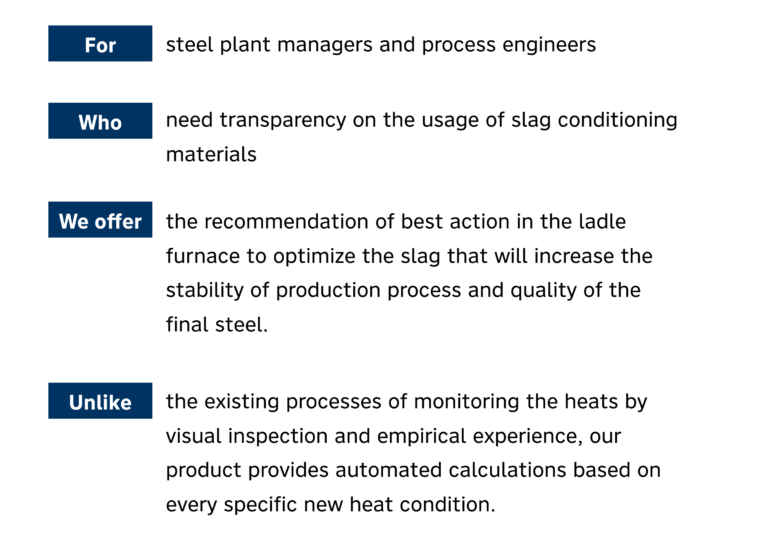
Life cycle
The situation of the software is between the initial development and the product introduction, directing the marketing strategies to validate it with stakeholders and clients.

Stakeholders map
In order to develop the strategy to engage the stakeholders and clients we create the stakeholders map to see what and how the connections between them happen.

Our work system
We work combining the agile and the scrum ban methodologies in order to deliver the most important value in the minimum time possible, always iterating and building the deliveries in the sprints together with the stakeholders.
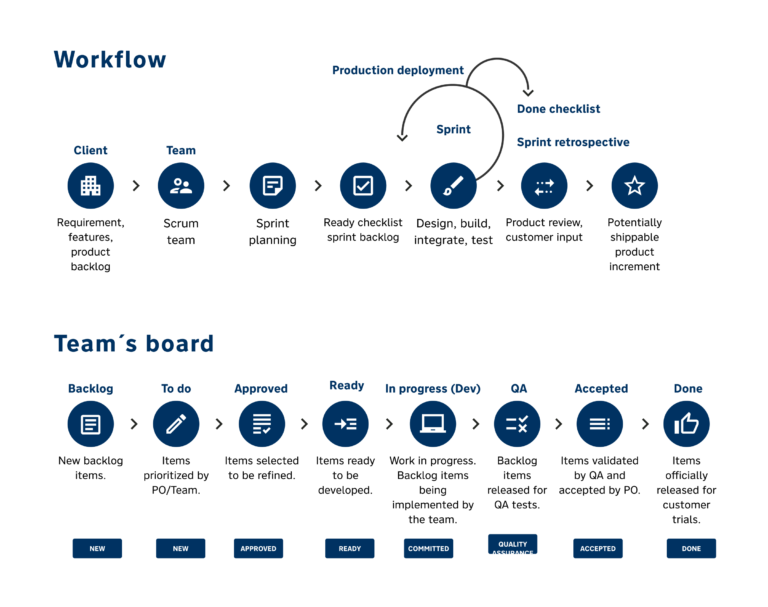
Scope
All the necessary production data required to map the heat conditions are transferred to the LSM application via usage of APIs.
After the new heat calculations been executed by the RHIM slag model engines, the results are transferred back to the Customer’s automation system (ex. Level 2).
In this process, you can access the LSM recommended additions directly via the customer’s system interface. A secure connection is guaranteed.


Branding
I proposed to create a branding for the software to create a strong visual identity for the project, following the principles of the RHI Magnesita braiding style.
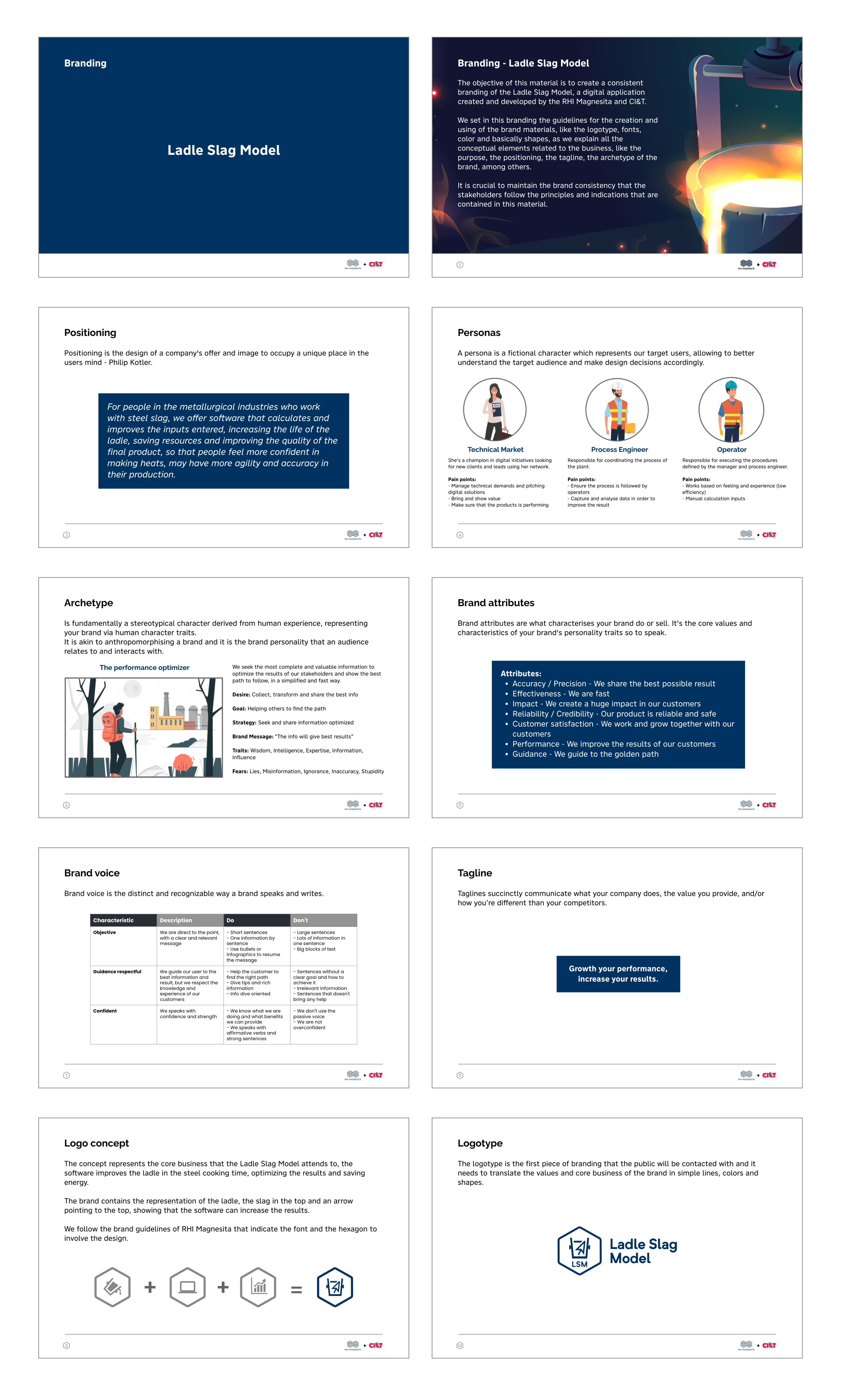
Heuristic analysis
When I came to the project I could identify many problems of design that were affecting the user experience.
I did a heuristic analysis and many tests in the pages to validate these questions that I got in my first studies. I also created a presentation to highlight the main points.
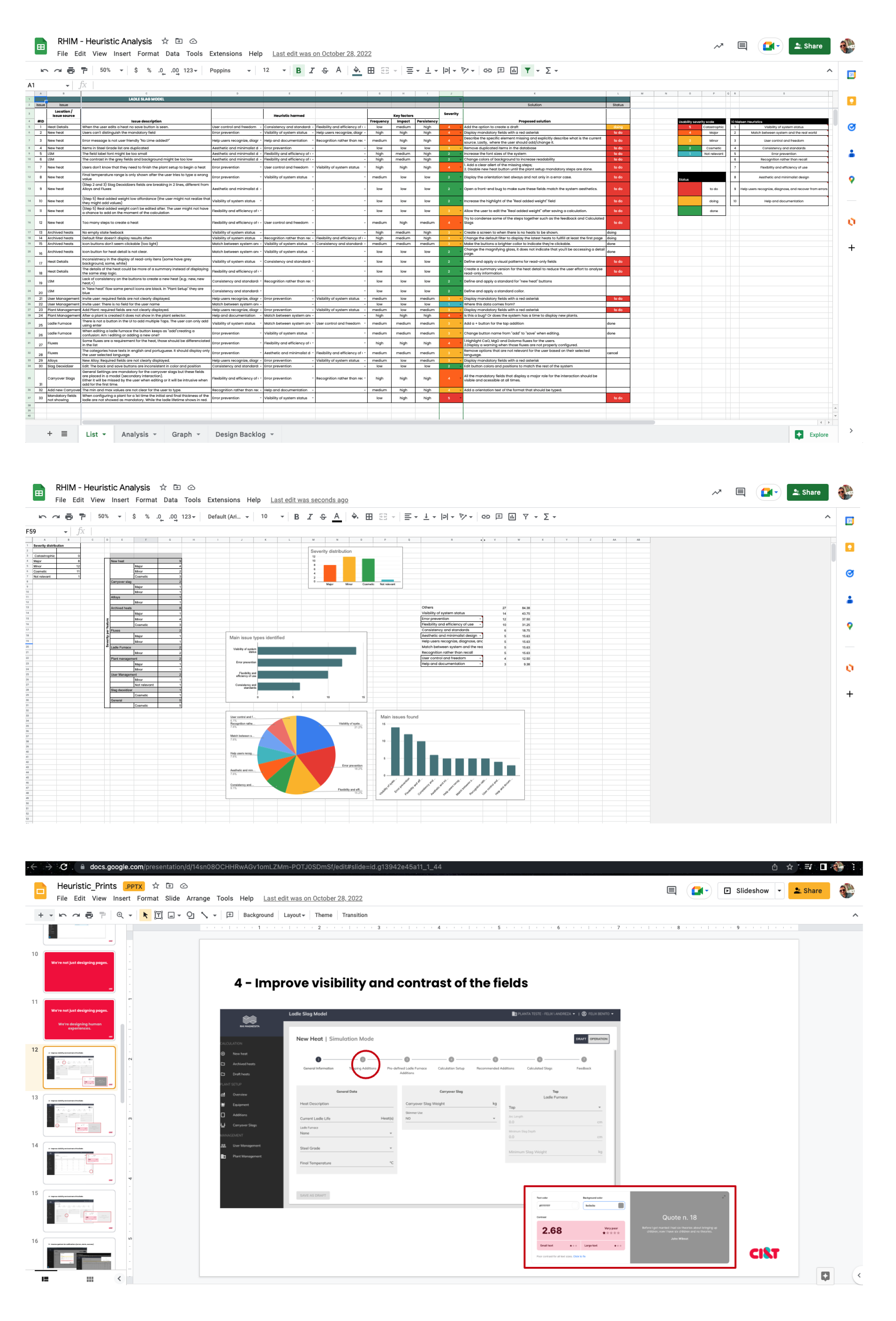

Problems identified:
- Design with old style
- Problems of contrast in colors, fonts, spacing and boxes
- Product without a specific branding
- Boxes that are not necessary
- Different design patterns between the pages
- Required fields are not flagged
- No responsive mode
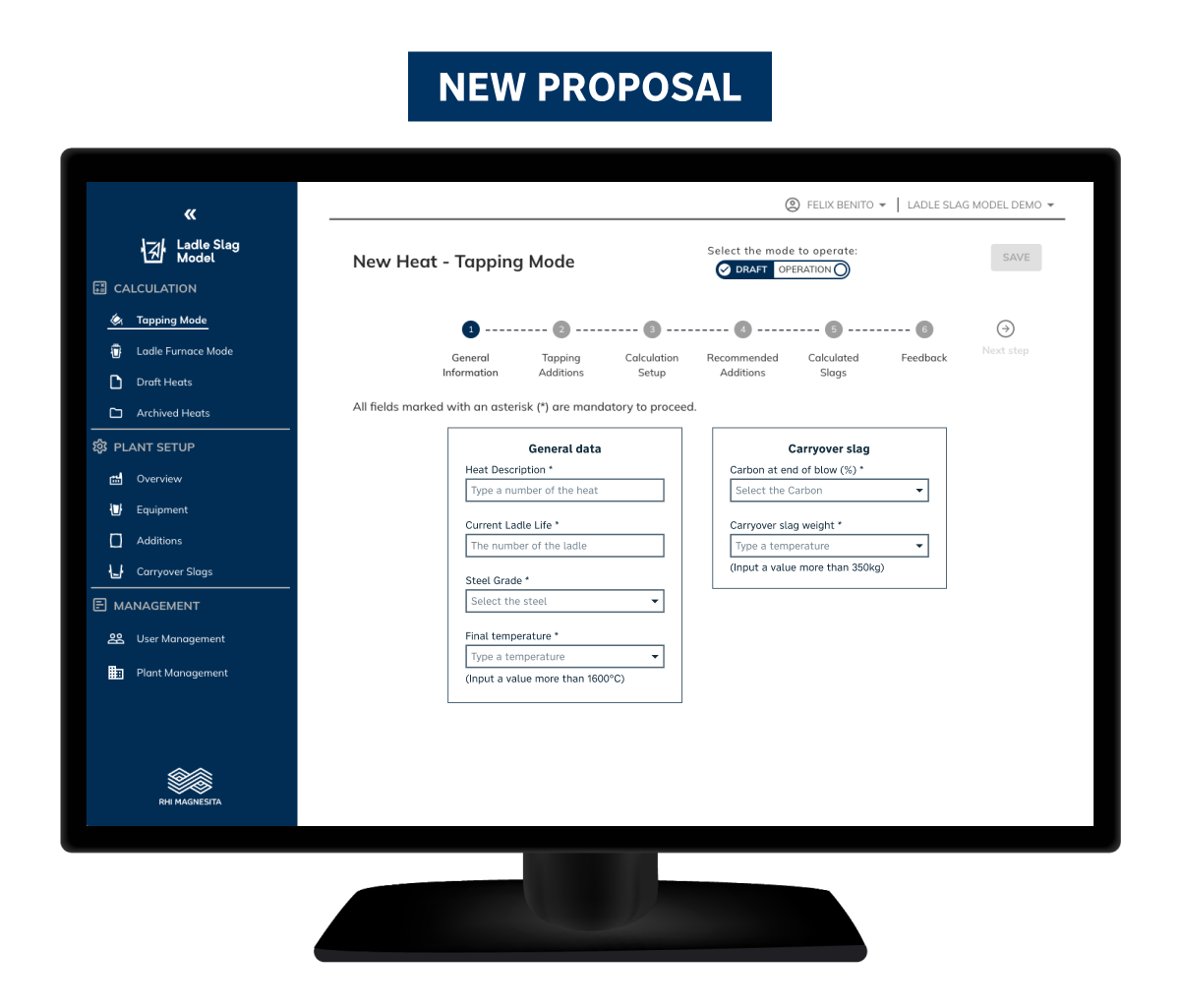
Improvements with the new version:
- Modern design
- Contrast accordingly with the WCAG guidelines
- Branding and a logotype
- Clean boxes only when it is necessary
- Design system to create a strong pattern in the pages
- Required fields are flagged in order to help the user
- Responsive mode
- Collapsed menu
Design system
To create the new version of the software I developed the Design System for the components to establish a pattern in the screens and in the interactions.
































Example of a component in the design system:

Marketing materials
I helped to develop the marketing materials to share the system for the stakeholders and clients like the landing page, the demo video and the e-mail marketing strategy.
Landing page:

WhatsApp marketing:

Metrics
In order to colect feedback and data to improve the system and usability, we frequently analyze the results from Google Analytics and Hotjar:
- Daily, weekly and monthly users
- Most pages accessed
- Usability of the system
- Amount of heats by plant
- Recency of use
- NPS
- System usability scale
- Recordings


Delivered
During the period working together we achieved the following features:
- Draft mode
- Tapping mode
- Branding
- PlantSetup – Additions
- Overview
- Draft Heat
- Penetration Tests
- Logs
- Database Migration
- New Production
- Environment
- Sonar Issues
- Proxy remotion
- Imperial system
- User management improvements
- Onboarding improvements
- Landing page
- Deck with the presentation of the system
- Redesign*
- Design system*
- Demo video*
- Unit tests*
* Working delivered in part, still in progress.
Next steps – What is in our roadmap for the future
Dark mode
- Long sessions (e.g., news application, ebook reader): The longer users typically spend looking at your design in one sitting, the greater the chance of eye strain and excessive battery consumption.
- Frequent usage (e.g., messaging app): The more frequently users engage with the design, the more time they will spend looking at it and the more likely it is that they will use it in dark conditions.
- Low-light conditions (e.g., movie-streaming app, white-noise app): The more users are likely to use the design in the dark, the more bothersome it will be if they are subjected to the blast of white screens while the pupils are dilated.
Responsive mode – Tablets
- Improve the user experience Access to content that is appropriately adapted on any device greatly improves the user experience. A good responsive design also improves readability, increases the time spent on a website, it enhances interaction
- Loading the site faster Responsive web design improves site loading speed on different devices. A better loading speed not only improves the user experience but also influences the improvement of web positioning.
Contact page
- Provide better customer support.
- Easy to send messages and solve doubts.
Monthly communication with customers – Email marketing
- Connect with more customers
- Send news and improvements about the software, the market and the company
- Big numbers of heats and savings
- Increase business’s credibility and authority
- Track the most engaged customers
Annual workshop
- Online or in person
- Increase the networking opportunities
- Lecture presentations on the topic of metallurgy and about the LSM
Study case video
- Tell a story about the LSM in use by an actual customer, one whose shoes the viewer can place themselves in to determine if they too can benefit.
- We can highlight how we improve the results.
Metrics page
- Create a page with the main metrics for the users to understand how the system is working.
Results
— The software can calculate improvements in the steel production that can save 20 to 30% of materials and energy;
— We could create a strong and consist branding to the project;
— With the components of the design system we could create new features in 3x faster;
— The marketing materials can support the sales team and facilitate the prospections;
— We increase the number of paid clients in 4x.
What did I learn?
— Work with different teams and manage business, strategy and design to deliver the product that solve a real user problem with value;
— About metallurgy and steel production;
— How bit the industries are;
— How fun could be met in person the remote team 🙂

